Cardinaux Fernand
In my archive I have an old black and white picture dating back to 1967 with four young men photographed on the deck of a ship heading for Greenland. All four became helicopter pilots but unfortunately two of them died in an helicopter crash. One of them was Fernand Cardinaux, and this is his story.
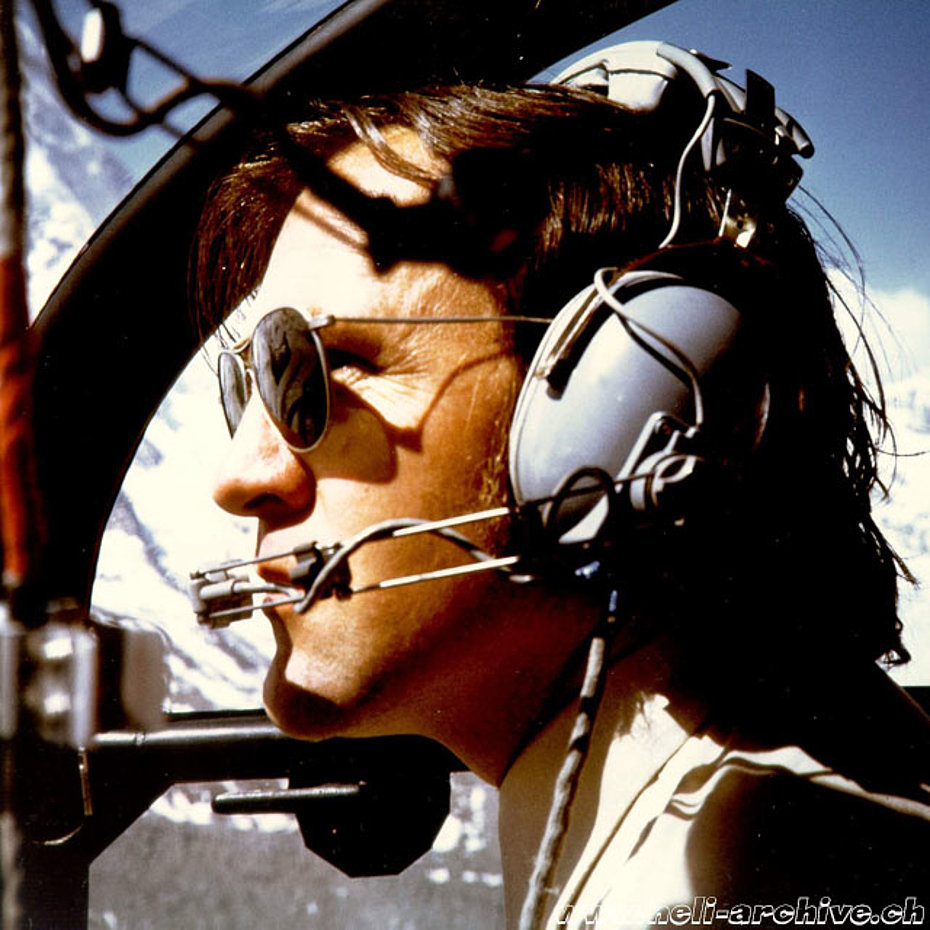
Fernand André Cardinaux, the youngest of four children (two sisters and a brother) was born in Blonay/VD on November 25, 1933.
In this village situated between Vevey and Montreux, above the Lake of Geneva, he attended primary and secondary school, following which he decided to commence an apprenticeship as car mechanic in a Citroën garage in Vevey. At the end of his apprenticeship, although he intended to improve his German language in Biel/Bienne, he decided to continue working in the garage subsequently attaining the status of a Federal master foreman.
Since childhood Fernand was attracted by aviation, and later, like many teenagers, he started to follow with keen interest the exploits of the famous Valaisan pilot Hermann Geiger.
Therefore some years later, after the completion of his apprenticeship, he decided to enroll with the flying school of the Section vaudoise de l'Aéro-Club de Suisse at the time directed by Ulysse Pahud. The flying school was (and is still) based in the regional civil airport named “Blécherette” located north of Lausanne. There Fernand Cardinaux obtained on July 12, 1962, the airplane private pilot license.
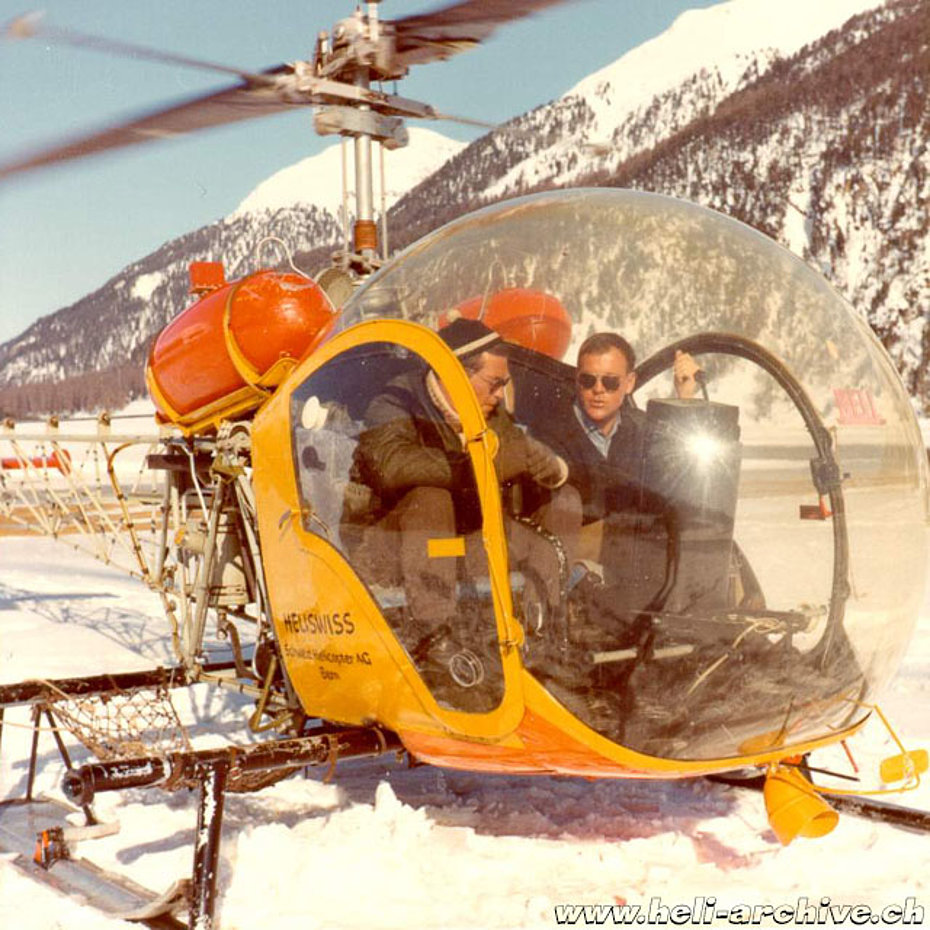
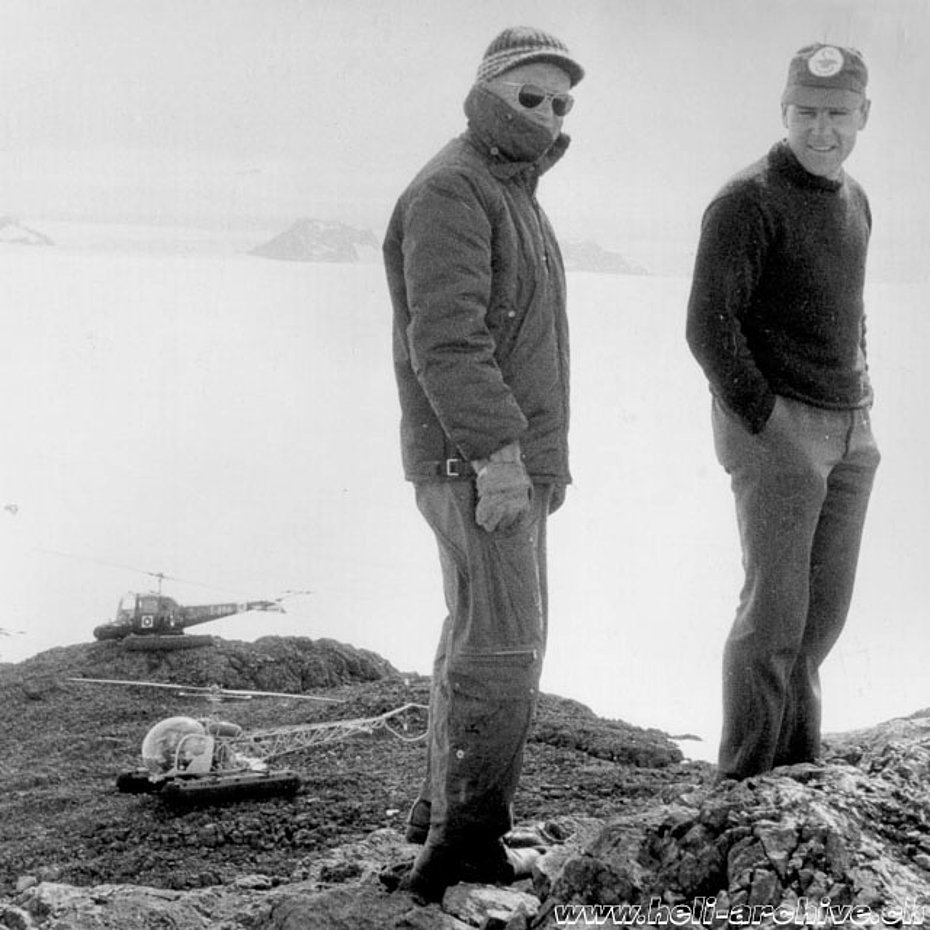
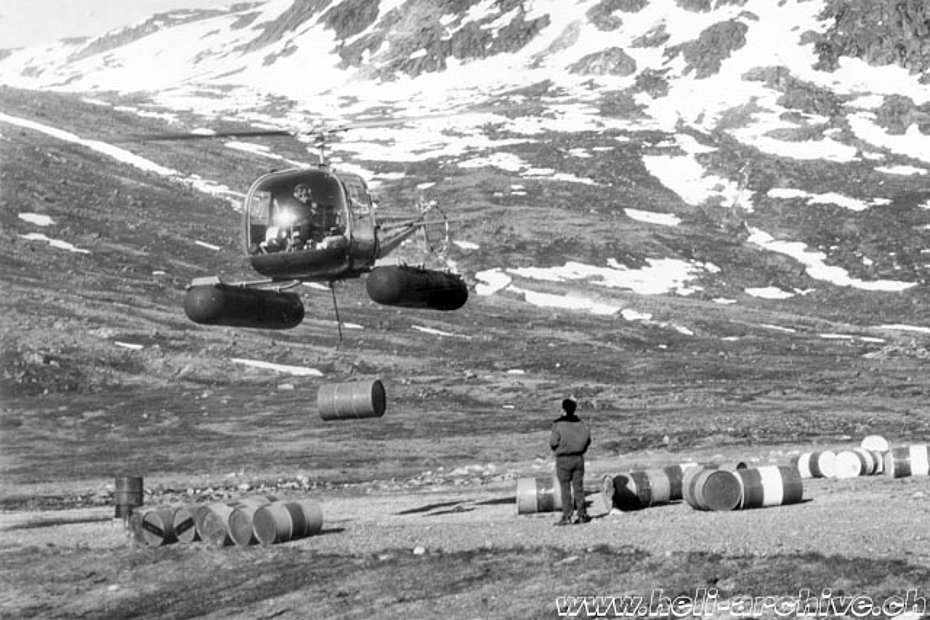
Helicopter pilot
In the 1960s there was a lack of helicopter pilots in Switzerland. Therefore several pilots were found abroad, especially in Austria.
Given his great interest in the rotary-wing Fernand Cardinaux decided to obtain a professional helicopter pilot license.
On June 11, 1964 he began the helicopter training course with Heliswiss’s instructor Jean-Pierre Freiburghaus.
On October 23, 1964 at the airport of Belp/BE Fernand had an accident with the Agusta-Bell 47G HB-XAV while practicing autorotations with the instructor above mentioned. The accident occurred because at the end of the autorotation the crew failed to level the helicopter on time.
Consequently the tail rotor guard hit the ground and this lead to extensive damages to both main and tail rotor blades and tail boom. Fortunately nobody was injured in this accident.
After obtaining the private pilot license Fernand Cardinaux continued his training obtaining the commercial pilot license nr. 77 issued by the Federal Office of Civil Aviation on September 1, 1965.
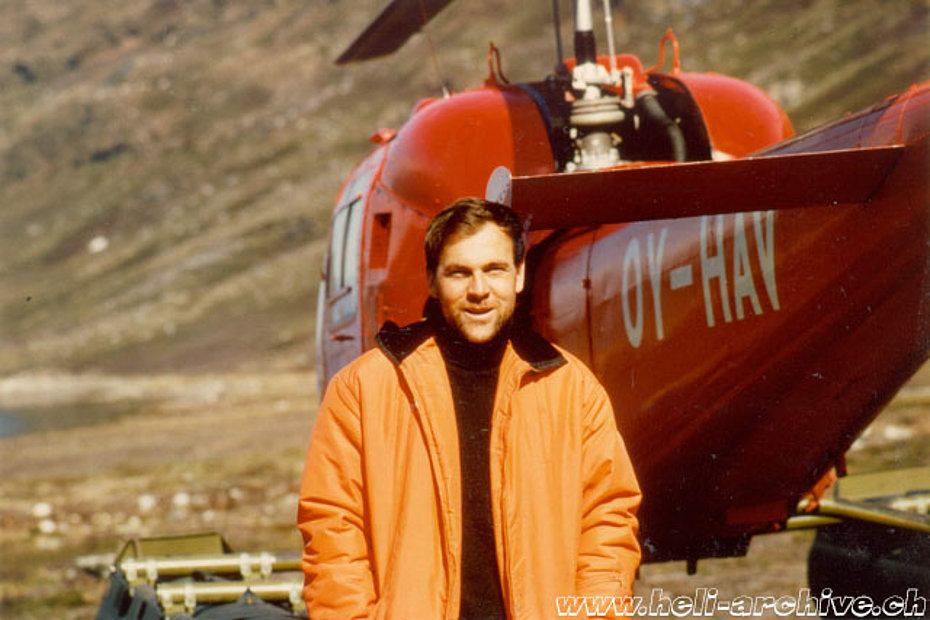
The training program
At that time the commercial pilots received their professional training as follows: the program was divided into four stages each comprising 25 hours of dual control flights: the first (Step A) allowed the candidate to obtain a private pilot license. The next step (Step B) allowed the candidate to obtain the commercial pilot license, while the next step (C) introduced the pilot to landings in pre-Alpine regions up to altitudes of 1,500 meters. In the last stage (Step D) the pilot learned how to land and execute commercial transports at high altitude in the Alps.
Fernand did his mountain training in Samedan/GR along with Markus Burkhard. Both were trained by Walter Tschumi. In Summer 1965 they also learned from Tschumi how to transport underslung loads.
At the end of the training program, with a total flight experience of about 100 hours, the pilot was considered (at least from a theoretical point of view) operative. The basic training was done on the (Agusta-)Bell 47G or G2 (Steps A and B), and then on the (Agusta-)Bell 47G3B-1 (Steps C and D). This latter version of the famous helicopter had a turbo-charged Lycoming TVO 435B-1A engine, and was therefore more suited for the fligths in the alpine regions.
However practical experience highlighted that the training was not sufficient and several unexperienced pilots were involved in accidents.
It is interesting to mention that at that time the high costs of the training of professional helicopter pilots was mostly financed by the Federal Office of Civil Aviation and the Swiss Air Rescue Guard (SARG, nowadays Rega). The pilots paid only 5% of the training costs and were required to sign a 5-years employment contract with one of the (few) Swiss helicopter operators then existing. Pilots had also to be available to the SARG for search and rescue missions. At that time in fact this organisation had only one helicopter, and therefore she was forced to employ personnel and helicopters belonging to other operators.
Fernand Cardinaux along with Markus Burkhard, Jean-Pierre Füllemann and Ulrich Bärfuss, was among the first to receive this financial support.
Heliswiss pilot
At the end of his training Fernand Cardinaux was immediately hired by Heliswiss as helicopter pilot. One of his very first mission was the transportation of the Mattmark’s victims, a catastrophe which took place at the foot of the Allalin Glacier (Valais) on August 30, 1965. Other missions followed such as for example the transportation of persons and goods, scenic and photographic flights.
The following spring he was charged with conveying the Bell 47G2 HB-XAX to Denmark in view of its use in Greenland. There he worked from May to September on behalf of a group of geologists employed by the GGU (Grønlands Geologiske Undersøgelse). His task was to transport men, equipment and food from one exploration camp to another.
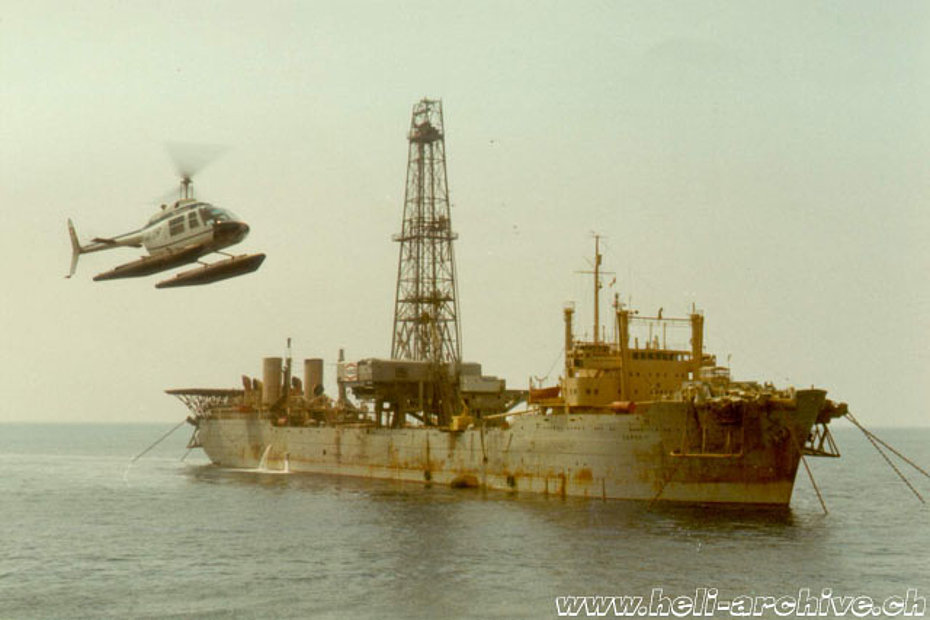
At the end of the season during which he logged 220 hours of flight, the GGU was very satisfied with the work done by the Swiss crew. For this reason GGU and Heliswiss started a long collaboration that lasted for many years.
After his return to Switzerland Fernand worked at the helicopter base in Belp/BE.
In the '60s and '70s more than half of the Heliswiss' flying activities took place outside the Swiss borders, and therefore its crews were forced to leave for several months their homes and their families to work abroad.
In 1967 Fernand Cardinaux worked again in Greenland for a further season with the GGU and much later he flew in Tunisia for about four months.
Shortly before Christmas, on December 23, 1967, he married Claire-Lise. The following year he was temporarily transferred to Thessaloniki (Greece) where he carried out offshore flights using a Bell 206A Jet Ranger on behalf of Texaco. The American company had in fact equipped a ship to carry out oil surveys.
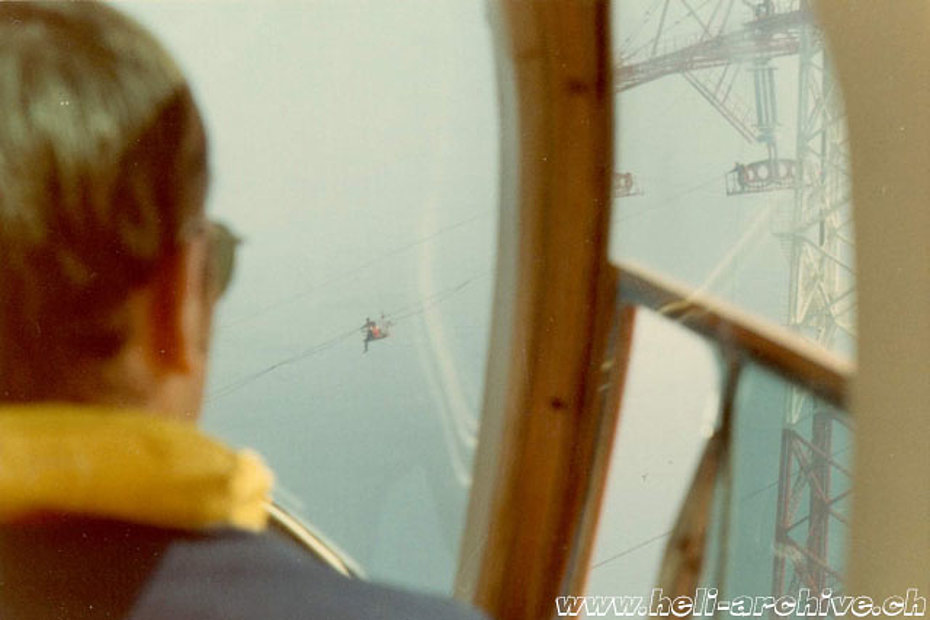
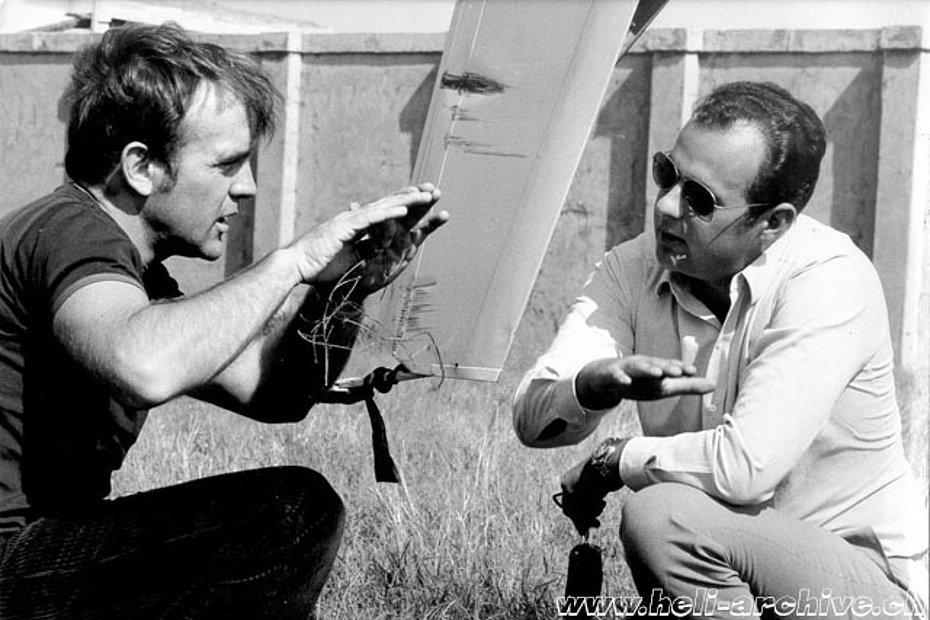
After his return to Switzerland he continued with the routine flight activities. During winter he did several flights in Gstaad transporting VIP and skiers holidaying in the famous tourist resort.
Surveillance flights on high-voltage power lines
In the fall of 1969 Fernand Cardinaux went to Sicily where he transported persons, goods and building materials on behalf of the Società generale elettrica della Sicilia. There he experienced a nasty mishap. While performing a flight inspection of the cables crossing the Strait of Messina between Sicily and Calabria, the Jet Ranger he was piloting was caught by a powerful wind gust causing the vertical stabilizer to hit one of the cables! Fortunately the blades of the tail rotor were not damaged so that he could land without other drawbacks. That night, still reminds Claire-Lise, Fernand wake up terrified by nightmares.
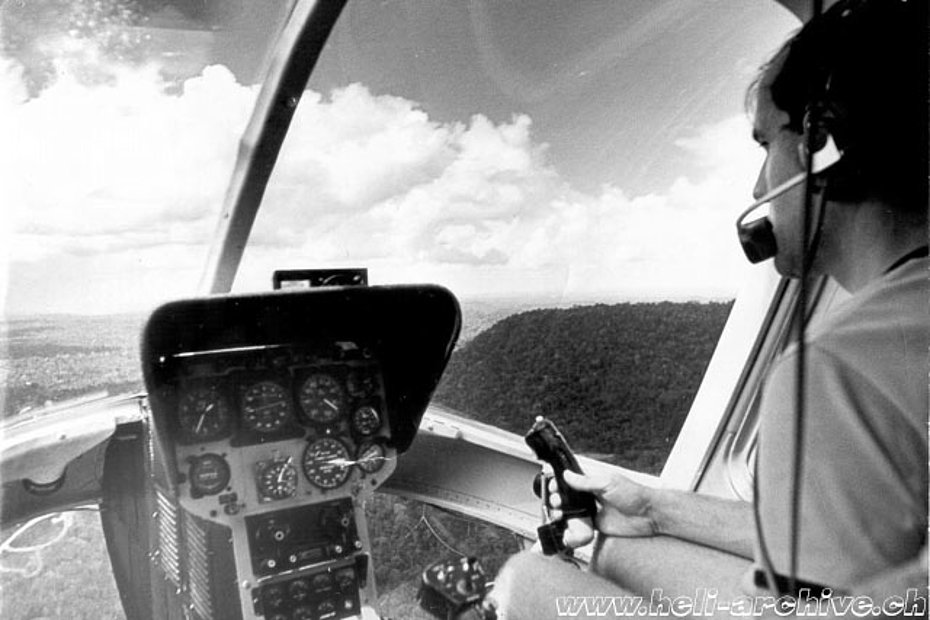
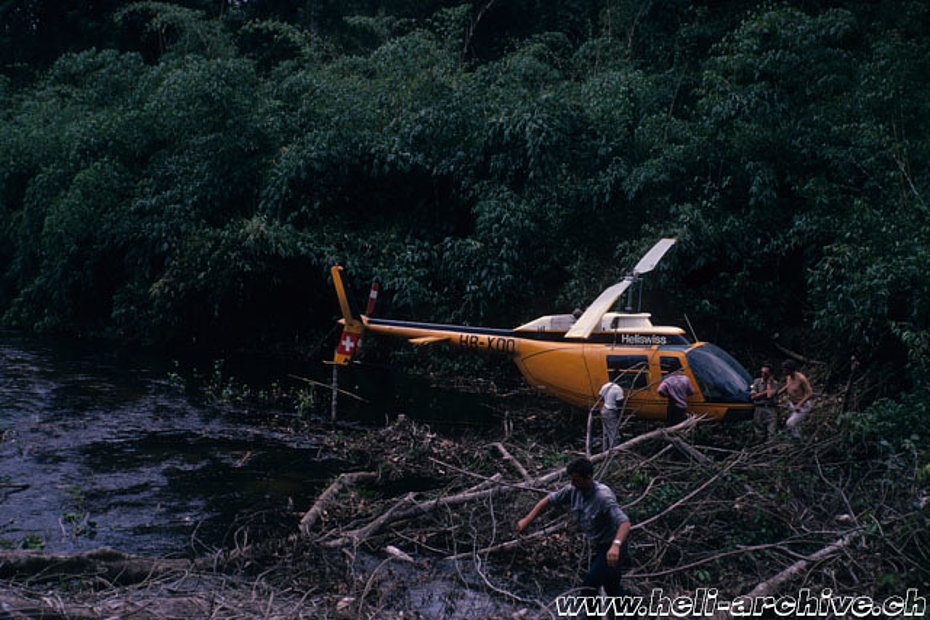
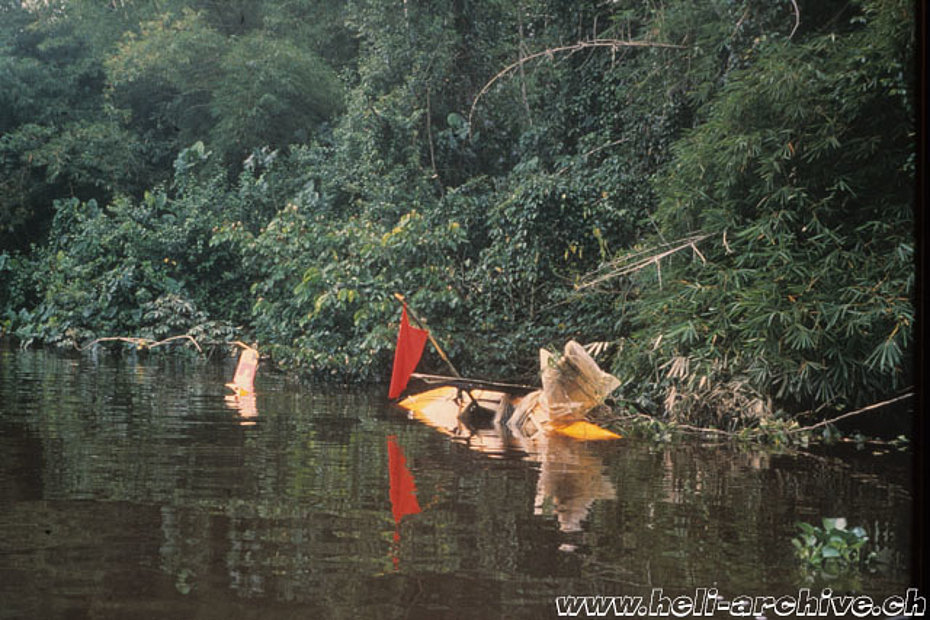
Lost in the jungle
In January 1971 Fernand Cardinaux left Switzerland and went to Suriname (former Dutch colony of Dutch Guyana). There Heliswiss spent several seasons employing its Agusta-Bell 206 Jet Ranger and Agusta-Bell 204B for the transportation of people, supplies and construction materials and occasionally for SAR flights too.
On March 30, 1971 as he was returning to the base at the controls of the Bell 206A Jet Ranger HB-XDD, due to the arrival of a tropical storm he decided to make a precautionary landing. As the equatorial forest was completely covered by dense vegetation, in order to save fuel, he landed in the only area that seemed adequate, a small clearing beside a river. After the storm cleared he prepared to take off, but for unknown reasons the turbine would not start. The pilot transmitted again by radio his approximate position and began a long wait. A search mission was immediately organized and his position was determined by a DC-3 in service with KLM Aerocarto. In the meantime, because of the strong thunderstorm the river level began to rise rapidly until the helicopter was completely submerged.
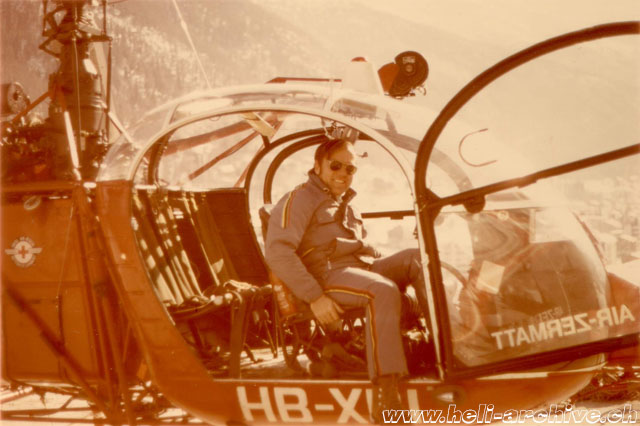
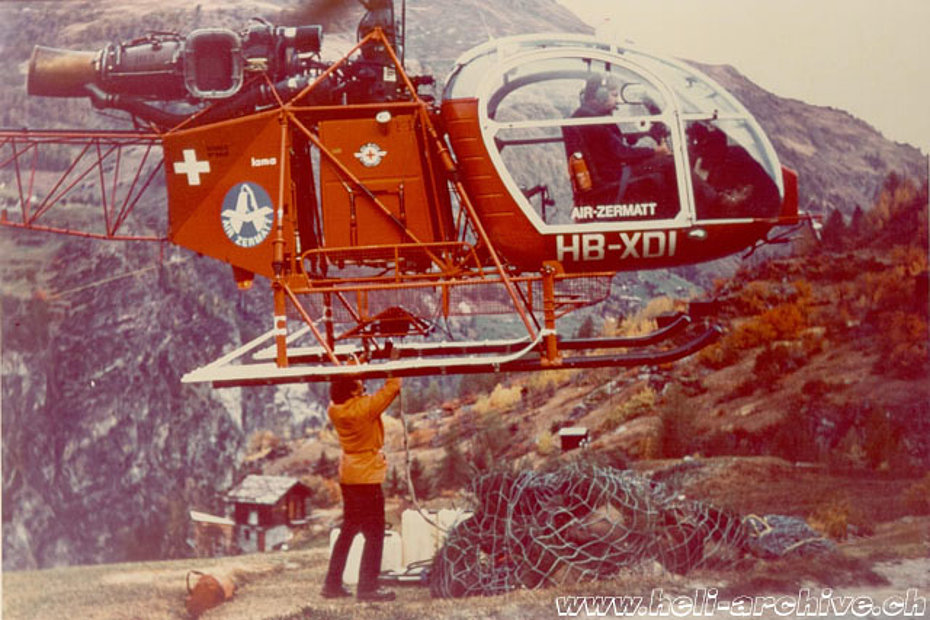
Fernand Cardinaux bivouacked for a few days near the aircraft until the arrival of the rescue team.
Unfortunately his helicopter was the only one in service in Suriname, and therefore it was necessary to request the intervention of a French helicopter based far away.
After his rescue he was transported to Paramaribo where his wife was anxiously waiting for him with their little daughter Loraine born on April 13, 1970.
Because of the prolonged stay in the jungle Fernand fell ill and for five weeks he was forced to stay in bed because of continuous fevers. It was a terrible time for him, his family and work colleagues because no doctor could figure out what was wrong.
Fortunately one day magically the fever ceased and his health quickly improved.
The helicopter was also rescued and brought back to Switzerland. Because of its color and the forced stay under water it was jokingly nicknamed "Yellow Submarine" after the famous Beatles song. However shortly after its arrival in Belp HB-XDD was cancelled from the Swiss aircraft register because it was damaged beyond repair.
The transfer to Air Zermatt
The following year (1972) Fernand Cardinaux left Heliswiss and went to work with Air Zermatt, one of the most known Swiss helicopter operators based in the famous tourist resort at the foot of the Matterhorn.
This decision was mainly motivated by the fact that he wanted to stay in Switzerland with his family all the year round.
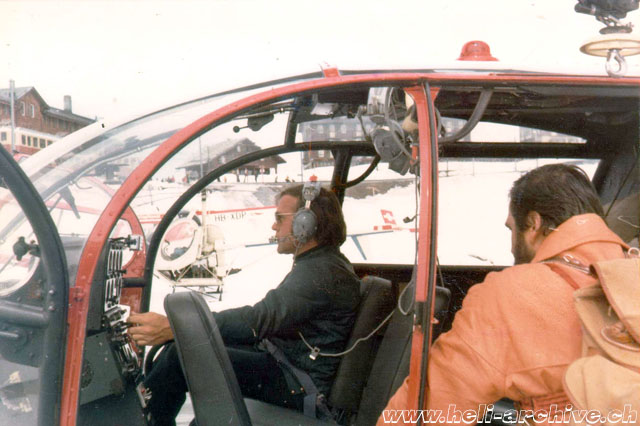
He started his new job on behalf of Air Zermatt on July 1, 1972. Trained by his new work colleagues (Günther Amann, Siegfried Stangier and Markus Burkhard), Fernand Cardinaux learned to fly with new helicopter models such as the SE 3160 Alouette III and the SA 315B Lama.
Thanks to his previous experience and his talent he soon learned how to exploit the excellent performances of these helicopters at high altitude, including the difficult rescue missions up to altitudes of more than 4,000 meters (13,000 ft). Fernand Cardinaux was the first to perform a direct aerial rescue on the famous north face of the Matterhorn (4,478 meters – 14,700 ft).
Transportation of people and construction materials, aerial supply of mountain huts and rescue missions quickly became his daily bread.
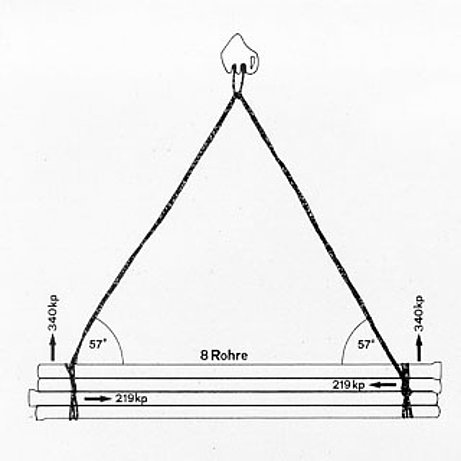
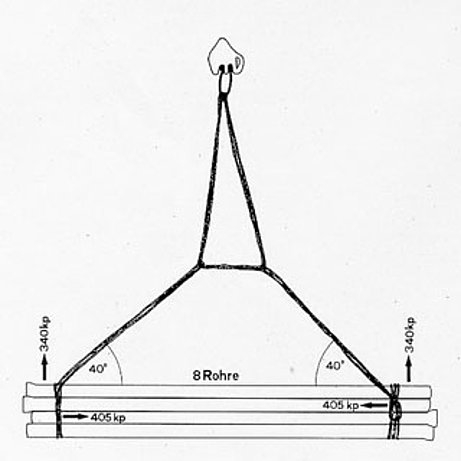
The tragic accident
On August 7, 1973 Fernand Cardinaux received from Air Zermatt’s head office the task of transporting building material from Rittinen (a small hamlet located along the road connecting the villages of St. Niklaus and Grächen) to a mountain construction site.
The pilot, at the controls of the SA 315B Lama HB-XDX, landed in Rittinen and shortly after the flight attendant began to prepare the loads. These latter were made up of metal pipes of about 6 meters in length and 10 cm in diameter which were somehow packed and weighed approximately 680 kg each.
Then the pilot took-off and carried out the first rotation with the load suspended by two lines each with a length of 8 meters. The first three rotations were accomplished without problems. For the transportation of the fourth load the flight attendant had at his disposal only lines of 6 meters in length and therefore he decided to use a third line which he inserted into the loops rings of the other two (see drawing).
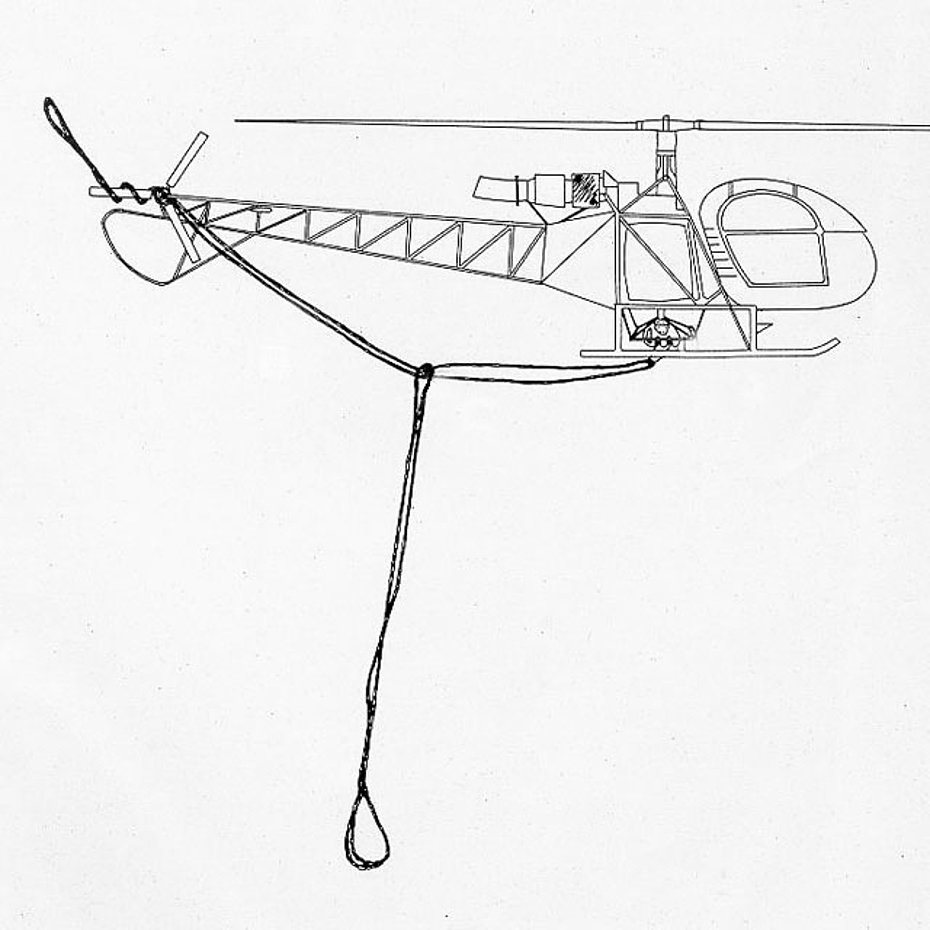
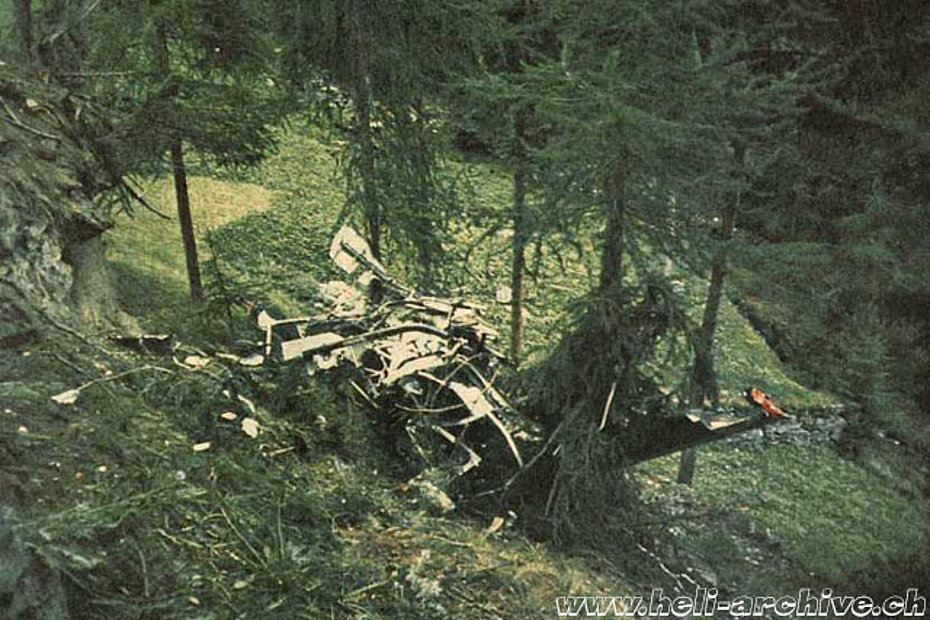
Fernand gently lifted the load but some instants later noticed that the tubes were slipping away and decided to lay again the underslung load on the ground. In fact, under the tension one of the underslung ropes had slipped toward the center unbalancing the load of tubes. The flight attendant readjusted the ropes and the pilot tried again to lift the cargo. Since everything seemed in order he did a new rotation and released his cargo at the construction site, then he returned to the starting point for another rotation.
At 08:45 he took-off again with a new load of tubes underslung in the same way as the preceding one. However, after about a kilometer suddenly the tubes slipped away and fell into the forest.
Witnesses observed that shortly after the helicopter, which was flying at about 130 meters of altitude, quickly began to rotate counterclockwise around the vertical axis. The aircraft rapidly lost altitude crashing in a wooded area.
In the accident, caused by a loss of tail rotor control (the ropes used to transport the tubes entangled around the tail rotor), the 39-years-old pilot unfortunately lost the life.
At the time of the accident, Fernand Cardinaux had a flight experience of over 3’500 hours under his belt on helicopters and 110 hours on airplanes. He was qualified to fly the following helicopter models: Bell 47 series G and J, Bell 206A Jet Ranger, SE 3160 Alouette III SA 315B Lama.
The incident generated a great emotion among those who owed him their lives. Overall on behalf of the SARG he carried out 139 rescue missions bringing aid to 126 people.
Along with flight attendant Thomas Lauber, Fernand carried out the 1,000th rescue mission on behalf of Air Zermatt.
On the Sunday before the accident he performed a challenging rescue mission in the region of Nadelhorn ferrying a seriously wounded climber to hospital.
Fernand Cardinaux left his wife Claire-Lise (who a few years later, following the footsteps of her late husband, also obtained her professional helicopter pilot license) and his young daughter Loraine.
After the funeral celebrations in Zermatt, the body was transported for the burial in the native village of Blonay. A memorial intended to honor him is visible on the site of the fatal accident.
After more than 40 years he is still remembered by his colleagues with great affection. All describe him as a cheerful person, very helpful and reliable, as well as an excellent pilot.
HAB 01/2016

